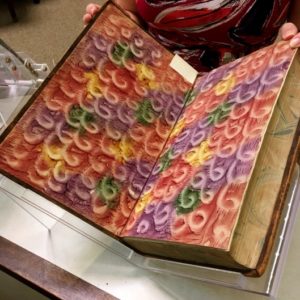
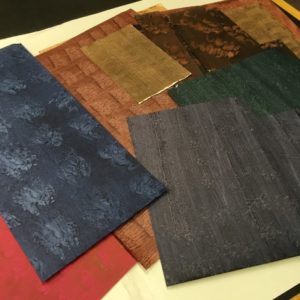
Paste papers are one of the early styles of decorative paper used in bookbinding, becoming a popular feature in books toward the end of the sixteenth century. They remained popular into the early nineteenth century, but were gradually replaced by marbled papers as industrial processes made marbling easier. Nevertheless, just as with marbling, individual practitioners of the craft continue to produce beautiful handmade papers to this day. Paste papers (at least the simpler patterns) are relatively quick and easy to produce, and this meant that historically, bookbinders themselves would create the papers in their own shops. Further contributing to their popularity, paste papers were inexpensive to produce compared to other forms of decorative paper. Often, bookbinders would simply reuse their bookbinding paste to create the papers. By the eighteenth century, a wide array of patterns and techniques had emerged, and paste paper-making had developed into a dynamic art form as well as a practical component of bookbinding.

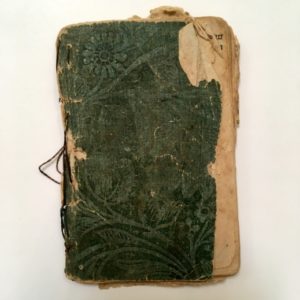
At its core, this craft is strikingly simple: colored paste is applied to a sheet of paper, and then the still-wet paste is manipulated in various ways to create a pattern. The paste is left to dry and voilà—decorative paste paper! Of course, the devil’s in the details, and there are countless ways for an artist to produce differing effects for their paste papers. The paste itself can be produced (usually with starch or cellulose) in varying consistencies, different amounts of pigment can be added to the paste (for more or less opacity), multiple colors can be combined, and—perhaps most importantly—various means of working the wet paste can produce markedly diverse patterns. An artist can use a virtually limitless number of tools, ranging from their fingers to brushes to stamps, to yield different and interesting effects.
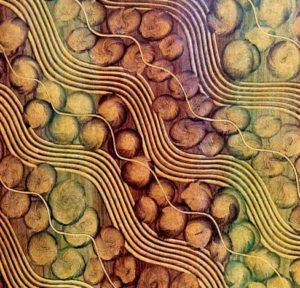
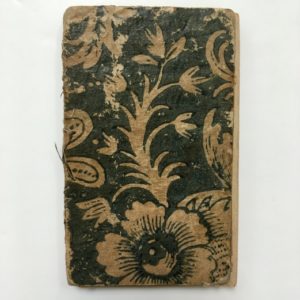
There are two other key paste paper techniques, both of which involve printing. Printed paste papers are created by applying a woodblock or metal plate to the sheet covered in paste: the colored paste is displaced in a particular way, leaving the desired pattern. Designs cut in relief or intaglio can both work for this purpose, each imparting a different effect. On the other hand, “prints in paste” require a process more akin to traditional printing: an artist takes colored paste and applies it directly to a plate or woodblock, then uses a press to produce prints in the typical way. Prints in paste are usually elaborate and often include repeating floral designs and multiple colors.
The appeal of paste papers lies in both their simplicity and the potential for creativity they offer. Just about anyone can acquire some paste, pigments, paper, and a brush and begin producing their own creations. Importantly though, an artist can start to experiment with different tools and techniques to produce increasingly complex and unique patterns. When anything from a fork to a sponge can be used as a tool for creating patterns, the creative possibilities are truly endless. With some imagination and a few household objects, any of us can create our own unique (and hopefully beautiful) decorative paste papers!
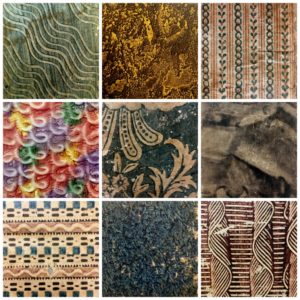

There will be a discussion of this kind of colour printing at the conference Printing Colour 1700-1830 Conference: Discoveries, Rediscoveries and Innovations in the Long Eighteenth Century (London, 10-12 April 2018), details (and soon the programme) at http://bit.ly/PC1700-1830